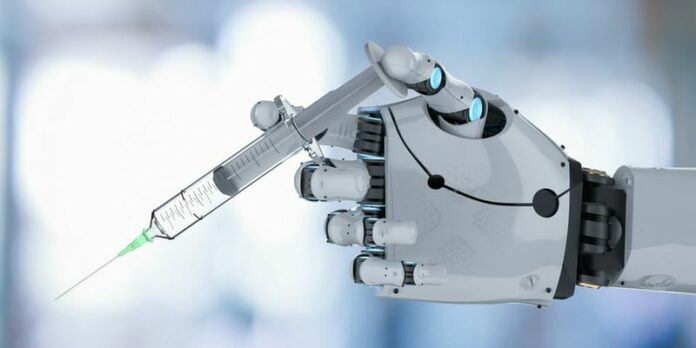The advancement of robot-powered surgery into telerobotic surgery delivers advanced technological solutions for so many inherent limitations of laparoscopic surgery. Laparoscopic surgery has been forced to a reassessment of mechanisms to bring new surgical procedures into modern surgical practice.
Tele-operated robotic surgery has opened its way to become a part of clinical care. The arrival of 5G, along with other advances in robotics and telemedicine solutions is taking this surgery practice to a next level. Already AI, big data analytics, robotics, high-speed data connections, IM systems, and more, are changing the healthcare ecosystem. These technologies are giving the ability to medical experts to deliver improved patient care from anywhere in the world.
As per the reports, the first successful telerobotic medical practice on a human was performed in 1995 in Italy. This was used for a prostate biopsy for a patient located 5km away using a robotic telemanipulator. After 6 years from that, a long-distance fully controlled remote surgery powered by high speed, high bandwidth communications, and adequate computational power was introduced. A French surgeon from New York City in September 2001 performed a cholecystectomy, the first complete remote surgery, on a 68-year-old female patient which was 6,230 km away in Strasbourg, France.
Also, a surgeon from Ahmedabad Dr. Tejal Patel who is a cardiologist performed the first-ever telerobotic operation on a middle-aged woman. With this, India became the world’s first to successfully perform a telerobotic method of surgery which is known as a coronary intervention. He performed this surgery by operating robotic-controlled instruments from a distance of 32 km.
Promise of Telerobotics
It is a necessary part of the field of telemedicine, telerobotics helps in the procedures like surgeries, treatments, and diagnoses easier, affordable, and more convenient. This is particularly performed across short or long distances through wired or wireless communication networks. Surgeries using teleoperated robotic systems are soon expected to make expensive, complicated surgeries much more reliable and affordable to patients of all kinds of people across the globe. Few of the reports claim that the US Department of Defense (DoD) seeks to have a Trauma Pod by 2025, which would enable surgeons to perform operations on soldiers from a distance.
Advantages of Robotic-Assisted Surgery
Robotic-assisted surgery can be performed for so many types of surgeries such as Colorectal surgery, General surgery, Gynecologic surgery, Heart surgery, Endometriosis, Transoral surgery, Thoracic surgery, Urologic surgery, and more. With robotic-assisted surgery, surgeons are provided with better visualization, leading to more precise surgery. As telerobotic surgeries have a greater range of motion and skills they can see a highly-magnified, high-resolution image of the operating field. For patients, robotics surgery gives shorter hospital stays, with less risk of infection, less blood loss, and fewer blood transfusions, less pain, and faster recovery.

